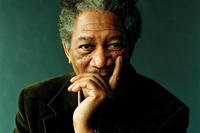One might think that betraying both the world's most notorious terrorism group and the West's most well-funded intelligence agency would be a shortcut to an early grave. The man who did it, however, is still alive. He gave the FBI its first look at the group that came to be called al-Qaida, all while giving special operations training to the mujahideen. Ali Mohamed may not have been the most famous terrorist in history, but he was certainly one of the most consequential.
Born into a devout Muslim Egyptian military family in 1952, Mohamed grew up close to Egypt's border with Israel. Israeli border guards would radicalize him as a teen, sowing the seeds of who later become Osama bin Laden's mole in the U.S. government's most secretive forces. It would be a series of miscommunications in the CIA, FBI and the Army that not only allowed him to come to the United States, but also join the Army's Special Forces, work as an agent of foreign terror organizations and write the al-Qaida training manual later used by the 9/11 hijackers.

Mohamed's early life was nothing really extraordinary for a young man of his background. He graduated from high school in 1970, but was already convinced he needed to take his fight to the enemies of Islam. He would later tell the FBI that he didn't need a fatwa against the United States, because it was so clearly the enemy. His jihadi career began when he joined the Egyptian army in 1971 and became a special operations intelligence officer. He also, like many of his fellow officers, joined the terror group Egyptian Islamic Jihad. It was the Islamists in military intelligence that planned the assassination of President Anwar Sadat in 1981 and put assassin Khalid Al-Islambuli in the position to do it. Mohamed was taking a special foreign officer's class at Fort Bragg in North Carolina when Sadat was killed.
Despite his tenure in the Egyptian army and his extensive training, Mohamed was too religious for Egypt's leaders and left the service in 1984. His leader in Islamic Jihad, Ayman al-Zawahiri, ordered him to work for the national airline so he could acquire air piracy countermeasures. That mission accomplished, his next assignment was to infiltrate a Western intelligence agency. It didn't take long, but Mohamed bungled it from the start, according to a West Point biography of Mohamed.
With its operations in the Middle East in jeopardy from Beirut to Baghdad, the CIA needed to step up its game. So when Mohamed came to the CIA's Cairo station in 1984 looking to volunteer his services, he was almost immediately accepted. The agency sent him to Hamburg, Germany, to infiltrate a Hezbollah-connected mosque there, but he quickly outed himself to the imam as a CIA plant. His handlers might not have known, were it not for the other CIA plant they had in the mosque. Mohamed's betrayal was reported, he was dropped from the CIA's rolls and the agency tried to bar him from ever entering the United States. That ban was not enforced, and he was not only able to enter the U.S. the next year, he was able to join the U.S. Army.
At 34 years old, the former Egyptian special forces soldier was still in solid shape. He outperformed all the other recruits in his unit during basic training at Fort Jackson, South Carolina, and was sent to the Special Operations Command at Fort Bragg, where he eventually became the supply noncommissioned officer for the 5th Special Forces Group. In 1988, he went on leave to Afghanistan, where he fought the Soviet Union with the Afghan Mujahideen. Mohamed didn't try to hide it; he even returned with Red Army belts from dead Russian troops as a gift for his commander.

It was around this same time that al-Zawahiri, still Mohamed's boss in Islamic Jihad, formed al-Qaida with Osama bin Laden and fellow Egyptian Mohammed Atef. Mohamed, however, was passing classified Army Special Warfare Center materials to Islamic Jihad members in New York and New Jersey while training them to fire small arms. The documents he passed included top-secret SOF training manuals, U.S. Navy docking center locations, and the exact locations of American special operations units. But Mohamed wasn't just passing along these manuals; he was also writing one of his own.
In the late 1980s, he wrote the official al-Qaida training manual "Military Studies in the Jihad Against the Tyrants," based on his own special operations training in the U.S. and Egypt. Some 180 pages long, it consists of ideology along with detailed instructions on everything from forming a sleeper cell to counterfeiting currency. He left active duty shortly after and joined the Army Reserve in California, where he'd married an American woman. For nearly a decade after leaving the service, he would be involved in every major al-Qaida operation.
Mohamed's work began with providing in-person training to al-Qaida fighters in Afghanistan and Pakistan. At the same time, he became a criminal informant for the FBI when he revealed a Hamas document-forging ring inside the United States. As part of al-Qaida's Africa Corps, he provided security for bin Laden's move from Afghanistan to Sudan in 1991 and also his return in 1996. He also trained al-Qaida's entire leadership in modern U.S. Army combat operations during this time period.
In the 1990s, he set up the cell that would bomb the U.S. embassies in Kenya and Tanzania and trained the Somalis who fought American intervention in Mogadishu (and the "Black Hawk Down" incident) all while moving and raising money in the United States for al-Qaida operations abroad. He also trained those involved in the 1993 World Trade Center bombing and the New York City landmark bomb plot, a one-day plan to blow up bridges, tunnels and important symbols inside the city. It was only after the bombing of the American embassies in Nairobi, Kenya, and Dar-Es-Salaam, Tanzania, that Ali Mohamed was finally arrested. His most stunning achievement to this point was how he'd managed to evade capture for so long.

After getting caught revealing his CIA ties to Hezbollah in Germany, he was placed on watch lists by both the CIA and the U.S. State Department, but it was alleged that the CIA clandestinely sponsored his entry. The Army documents he leaked to Islamic Jihad were scooped up by U.S. authorities when they raided the NYC apartment of the alleged landmark bomber El-Sayyid Nosair, but were overlooked even during his 1991 trial. Mohamed also failed a lie detector test when he first tried to infiltrate the FBI in 1990. The FBI failed to even administer a test when Trans World Airlines reported that he was arrested in Rome for carrying luggage with secret compartments.
In 1993, he was caught lying to Canada's RCMP about his friend and fellow al-Qaida operative's fake passports. Finally, the FBI caught up with him after the Canadians reported the incident. This was when Mohamed gave the U.S. its first look at the al-Qaida network, describing bin Laden's plans to overthrow the Saudi government, its training camps in Sudan and even the anti-hijacking training he provided to terrorist fighters. But this report was reportedly lost in a Defense Department reorganization. Still, despite failing a polygraph, Mohamed was again set free.
It wasn't until 1997 that he admitted the full extent of his activities with al-Qaida to American authorities. He told the FBI and U.S. attorneys about his direct work with bin Laden, training the Somalis fighting Americans in Mogadishu and scouting locations for potential terror attacks. He was allowed to walk free yet again, but the FBI began to monitor his phone and movements inside the United States. In the aftermath of the 1998 bombing of the American embassies in Kenya and Tanzania, he was secretly arrested and has been held without trial ever since at an unknown location. It is alleged that he is cooperating with the fight against the al-Qaida network and remains the greatest unanswered question in the Global War on Terrorism.
Want to Learn More About Military Life?
Whether you're thinking of joining the military, looking for post-military careers or keeping up with military life and benefits, Military.com has you covered. Subscribe to Military.com to have military news, updates and resources delivered directly to your inbox.















